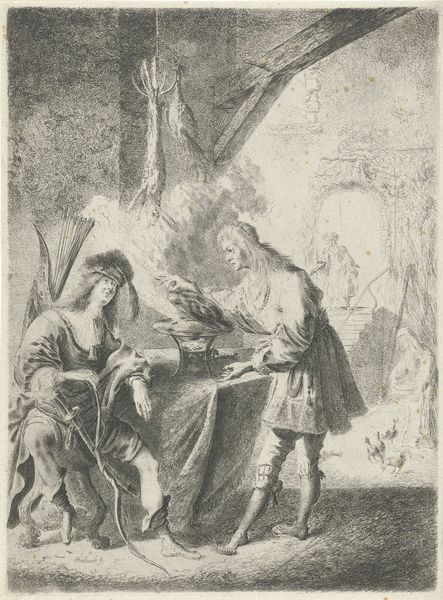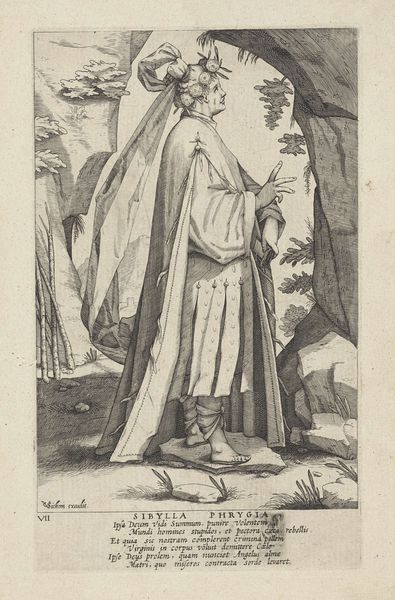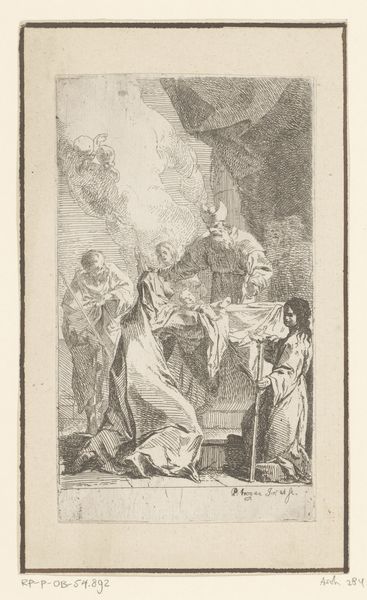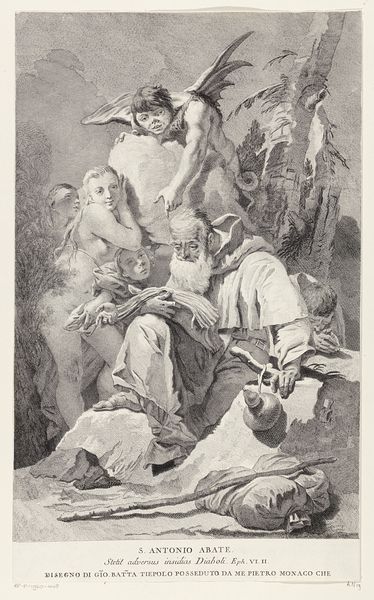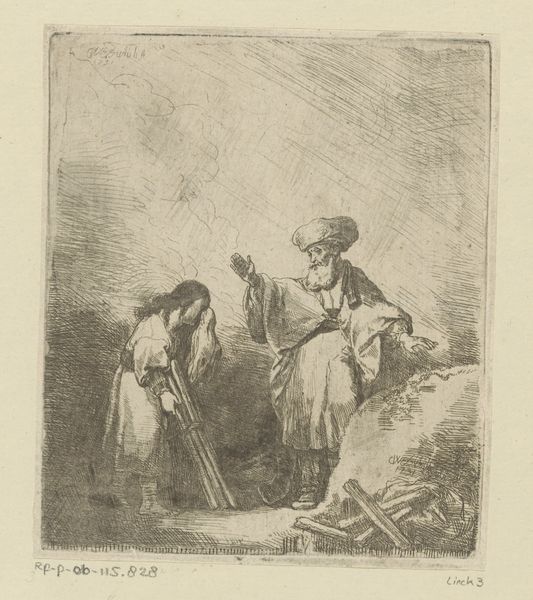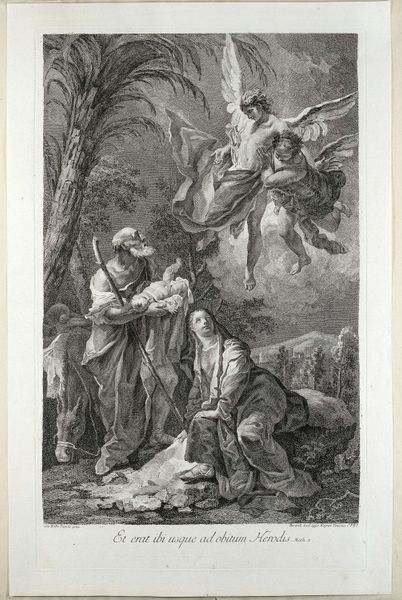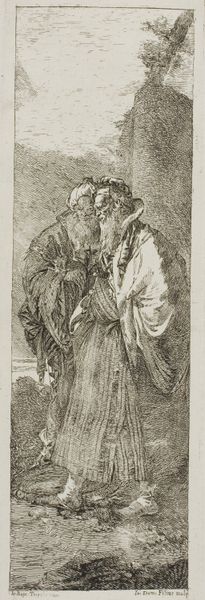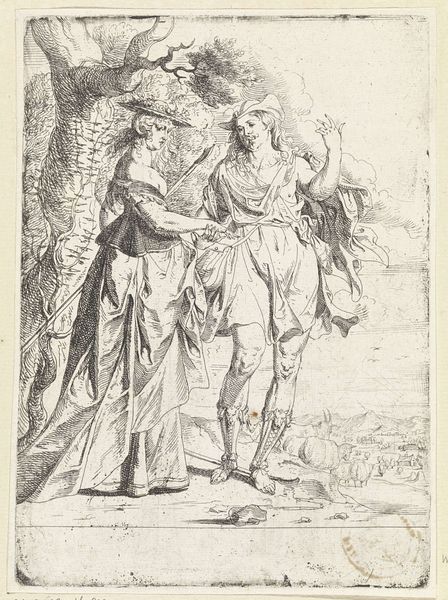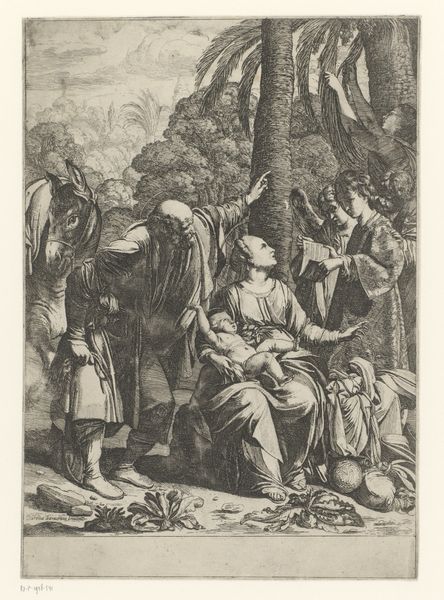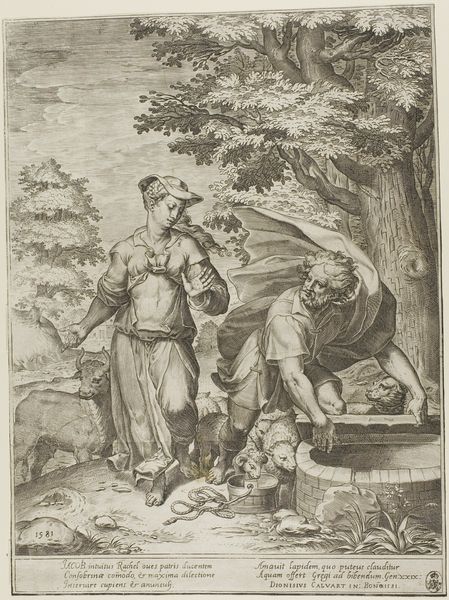
drawing, print, etching, paper, ink
#
drawing
#
narrative-art
#
baroque
# print
#
etching
#
figuration
#
paper
#
ink
#
genre-painting
#
history-painting
Dimensions: height 276 mm, width 203 mm
Copyright: Rijks Museum: Open Domain
Editor: This etching, “Ezau verkoopt zijn eerstgeboorterecht aan Jakob,” or “Esau selling his birthright to Jacob,” by Pieter Rottermondt, depicts a pretty pivotal Old Testament scene. The mood feels heavy, and yet domestic, like a stage play unfolding in someone's backyard. How would you interpret this work, keeping in mind its historical and cultural context? Curator: The piece seems to engage with a common theme in the Baroque era: examining social hierarchies and moral ambiguities through biblical narrative. Think about how this scene would resonate with a 17th-century audience. What power dynamics are at play, and how does Rottermondt visually communicate them? Editor: Well, Esau looks completely defeated. His slumped posture suggests a lack of awareness about the stakes, even, whereas Jacob, though generous in offering food, has this upright stance and seems keenly aware of the deal he's making. Is the artist making a judgment, then? Curator: It's possible, but it's also about how images construct social perception. Remember that religious imagery served as a form of moral instruction but also as a reflection of societal values. Does the inclusion of details like the simple home setting add to or detract from the power of this scene? Editor: It sort of brings the sacred down to earth. Makes it less about grand morality and more about everyday decisions and their consequences, right? Curator: Precisely. And consider who was commissioning and consuming art at the time. How might their values be reflected in such a portrayal of power, inheritance, and perhaps even social climbing? Editor: So, beyond just the story itself, the image becomes a commentary on social values of that time period, interpreted through a biblical lens and further filtered through who had the privilege to commission such art. That's… surprisingly complex. Curator: Indeed. It invites us to consider the visual language of power and morality across different historical and cultural landscapes. Editor: Thanks. Now I see the exchange is a social reflection frozen in time.
Comments
No comments
Be the first to comment and join the conversation on the ultimate creative platform.

